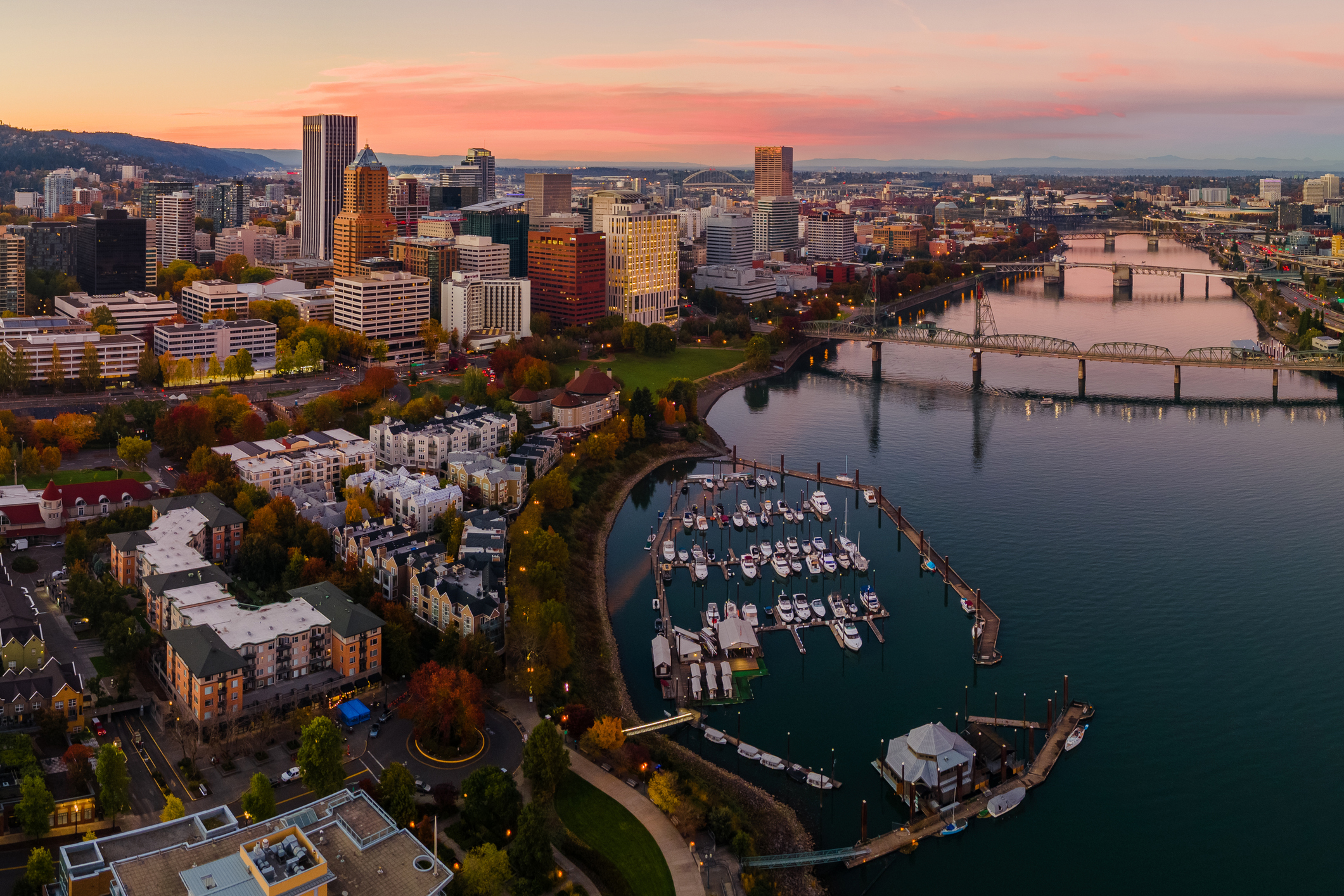Contributed by RocketHomes
Given the devastating effects of global warming, we wanted to recognize the country’s most eco-friendly cities and take a minute to appreciate the initiatives they’ve implemented to reduce their carbon footprint.
To determine which cities do the most to protect the environment, Rocket Homes® partnered with Best Places. Take a look at the 15 most sustainable cities that are leading the effort to preserve our planet for generations to come.
1. Portland, Oregon
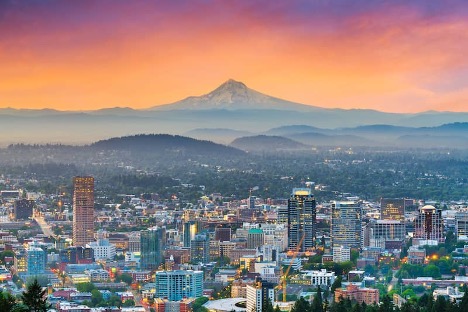
• Metro population: 2,492,412
• Percent of renewable energy: 49.1%
• Square feet of green space per person: 472.5
• Percent of energy-efficient commuters: 19.6%
Portland is a city revered for its eco-consciousness. It is in the top 1% of the country for the power they generate from renewable sources. One of their largest energy efficiency projects to date has been converting 45,000 streetlights to use LED technology. Now, the city’s streetlights and traffic signals use 66% less energy than they did back in 2006, and Portland saves $1.5 million annually. Through its recycling and composting efforts, Portland recovers 81% of all waste produced by city operations and is on track to recover up to 90% by the year 2030.
2. Seattle, Washington
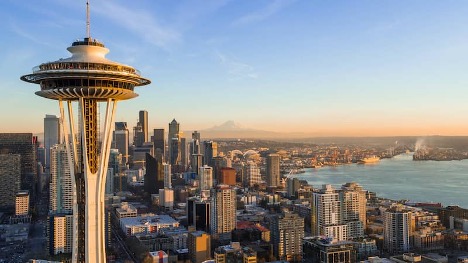
• Metro population: 3,074,865
• Percent of renewable energy: 46%
• Square feet of green space per person: 325.1
• Percent of energy-efficient commuters: 24.2%
Seattle may be known as the Emerald City because of its year-round greenery, but the nickname can be seen as even more appropriate given the city’s extensive green efforts. Seattle is home to the nation’s first carbon-neutral utility company, Seattle City Light. Because of the company’s hydroelectric dams, the city ranks in the top 2% of the country for renewable energy. Meanwhile, Seattle’s top employers are also doing their part. While Amazon plans to achieve net-zero carbon emissions by 2040, Microsoft has set its sights on becoming carbon negative by 2030.
3. St. Paul, Minnesota
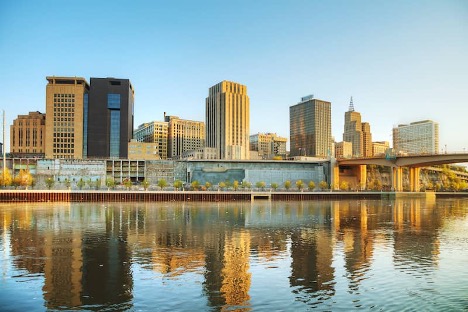
• Metro population: 3,654,908
• Percent of renewable energy: 15.8%
• Square feet of green space per person: 729.8
• Percent of energy-efficient commuters: 13.7%
Although the state of Minnesota has committed to reducing greenhouse gas emissions 80% by 2050, St. Paul has taken their efforts a step further, planning to achieve carbon neutrality by the same time. As part of its strategy, the city has turned its attention toward large buildings, as their energy use makes up 40% of St. Paul’s emissions. To help ensure Minnesota’s capital achieves its goal, the city now requires owners of these buildings to track and report their energy and water use.
4. San Diego, California

• Metro population: 3,338,330
• Percent of renewable energy: 14.5%
• Square feet of green space per person: 483.3
• Percent of energy-efficient commuters: 13.6%
San Diego has found a way to help combat California’s increasingly frequent droughts. Through the Claude “Bud” Lewis Carlsbad Desalination Plant, the area has been able to use reverse osmosis to transform ocean water into viable drinking water. The plant processes 100 million gallons of salt water each day, providing San Diegans with 50 million gallons of potable water. While this new technology does increase greenhouse gas emissions, the city has still managed to decrease emissions by 25% in just under a decade.
5. Washington, D.C.
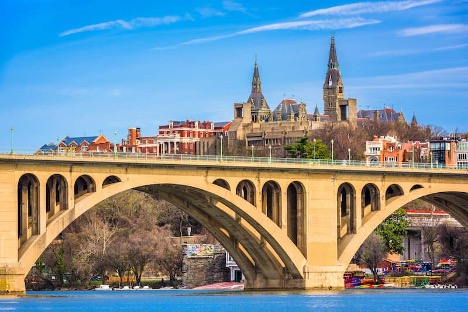
• Metro population: 4,956,991
• Percent of renewable energy: 40.2%
• Square feet of green space per person: 383.2
• Percent of energy-efficient commuters: 24.5%
D.C. is in the top 2% of the country for LEED-certified buildings. In the last decade, D.C. public schools have led the way in energy-efficient construction. As the U.S. capital continues to reduce greenhouse gas emissions, the city is now working toward creating net-zero energy schools that produce as much energy as they consume. D.C has also invested in using wind and solar power to generate energy for municipal and residential buildings, which has helped push the city into the top 3% of the country for renewable energy.
6. San Francisco, California
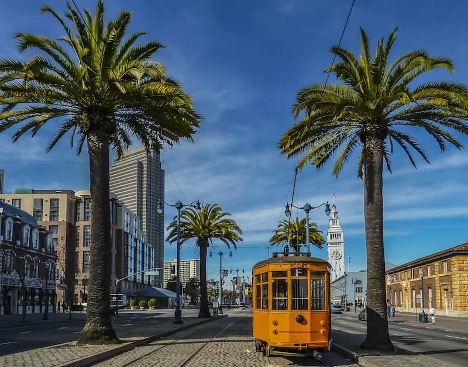
• Metro population: 1,648,122
• Percent of renewable energy: 14.5%
• Square feet of green space per person: 202.4
• Percent of energy-efficient commuters: 41.8%
For over a decade, San Francisco has strictly enforced a recycling and composting mandate that requires residents to separate their waste into three bins for recyclables, compostables and landfill-bound items. As a result, San Fran has a diversion rate of 80%. Plus, the city’s wealth of public transit options and bike and rideshare programs enable residents to travel without the need for a vehicle, which is why the city is in the bottom 3% of the country when it comes to car ownership.
7. Boston, Massachusetts
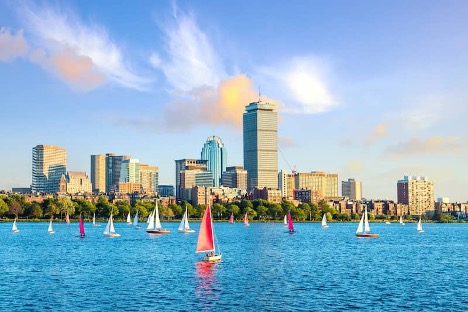
• Metro population: 2,031,884
• Percent of renewable energy: 7.2%
• Square feet of green space per person: 350.9
• Percent of energy-efficient commuters: 32.8%
Boston is in the top 5% of the country for residents who commute using energy-efficient modes of transportation and is more walkable than all but two other cities in the country. After meeting its 2020 carbon reduction goal 5 years early, Boston was able to reduce emissions by 60% more than planned. Thanks to the city’s efforts, American Council for an Energy Efficient Economy ranked Boston as the most energy-efficient city in the country from 2013 – 2019.
8. Denver, Colorado

• Metro population: 2,967,239
• Percent of renewable energy: 10.9%
• Square feet of green space per person: 432.7
• Percent of energy-efficient commuters: 15.7%
In 2019, Denver earned the LEED for Cities Platinum Certification, a program honoring communities that strive to enhance sustainability through urban planning, development and operations. The city has been seriously working to achieve its goal of 100% renewable electricity by the year 2030. As part of the effort, they are currently building solar gardens above municipal parking lots and rooftops. The power generated from the project will be made available to municipal buildings and low-income housing.
9. Sacramento, California
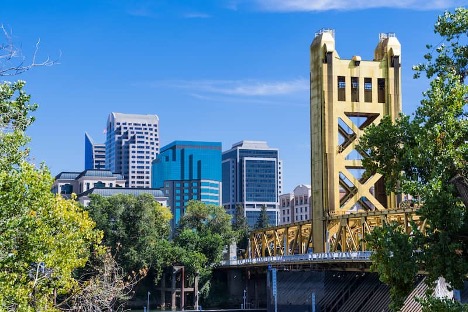
• Metro population: 2,363,730
• Percent of renewable energy: 14.5%
• Square feet of green space per person: 333.7
• Percent of energy-efficient commuters: 12.7%
Sacramento is focused on promoting the use of zero-emission vehicles with a plan to have 75,000 on their roads within the next few years. Electrify America has committed to providing the city of Sacramento with $44 million to increase the use of communal, electric modes of transportation. Thanks to the investment, Sacramento is gaining charging infrastructure for electric vehicles, electric car-sharing and electric bus and shuttle programs.
10. Los Angeles, California
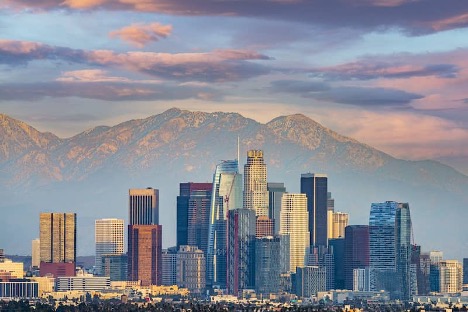
• Metro population: 10,039,107
• Percent of renewable energy: 14.5%
• Square feet of green space per person: 229.3
• Percent of energy-efficient commuters: 15.1%
Los Angeles takes its recycling very seriously. The city has committed to achieving its “Zero Waste-to-Landfill” goal by 2025. In 2012, LA had already increased its landfill diversion rate to 76.4%. Thanks to the city’s extensive programs and over 30 years of effort, it boasts one of the highest recycling rates of the largest cities in the country. LA’s waste management efforts will continue to ramp up as the city limits the use of styrofoam, plastic straws and utensils and single-use takeaway containers over the next few years.
11. Silver Spring, Maryland
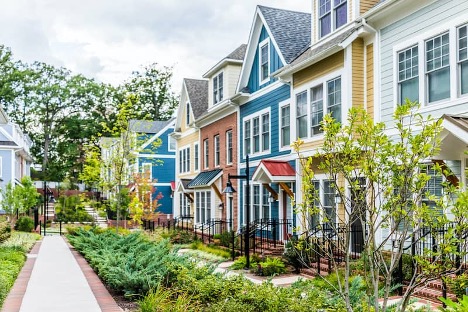
• Metro population: 1,310,235
• Percent of renewable energy: 6.6%
• Square feet of green space per person: 688.9
• Percent of energy-efficient commuters: 21.7%
Silver Spring has been helping to lead the way in eco-friendly city planning. The area has more energy-efficient developments than over 10% of the country. Silver Spring has received many LEED Silver and Gold certifications for buildings that range in use from libraries and recreation centers to residential towers. The city also ranks in the top 10% of the country for amount of green space per person, which helps the city lower its carbon emissions and improve air quality for its residents.
12. New York, New York
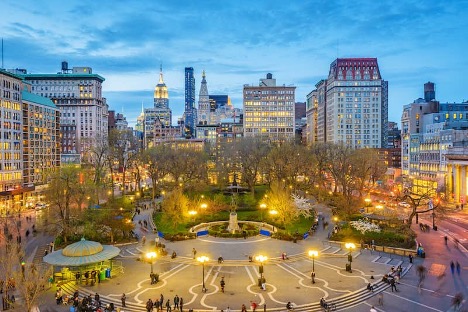
• Metro population: 14,172,514
• Percent of renewable energy: 12.7%
• Square feet of green space per person: 111.9
• Percent of energy-efficient commuters: 52.8%
New York City may not be the largest city by square miles, but the densely packed urban jungle is the largest with regard to population. And, big cities make for big savings when it comes to the consumption of our natural resources. The city’s compactness, walkability and access to efficient public transportation puts New York in the bottom 1% of the country for vehicle ownership and the top 1% for commuters who use energy-efficient means of transportation.
13. San Bernardino, California
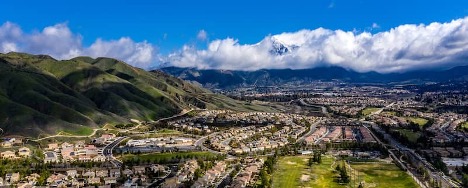
• Metro population: 4,650,631
• Percent of renewable energy: 14.5%
• Square feet of green space per person: 401.5
• Percent of energy-efficient commuters: 8.3%
San Bernardino may rank in the top 25% of the country for the percentage of power they use from renewable sources, but the city is still working to improve and further contribute to conserving the nation’s natural resources. Just 5 miles west, the Rialto Bioenergy Facility is being built. It will convert hundreds of tons of food and organic waste into renewable energy and fertilizer each day and promises to be the largest of its kind on the continent.
14. Honolulu, Hawaii
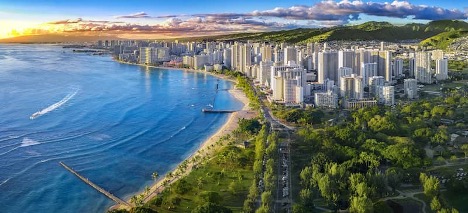
• Metro population: 974,563
• Percent of renewable energy: 10.6%
• Square feet of green space per person: 321.8
• Percent of energy-efficient commuters: 18.6%
Honolulu has been working to increase its carbon-free transportation options. The city’s bikeshare program is among the most used in the country, and the city ranks in the top 15% of the country for the number of all-electric vehicle registrations per capita. Thanks to the city’s ongoing efforts, which include the future development of a Carbon-Free Corridor, the city currently ranks in the top 20% for green commuters.
15. Phoenix, Arizona
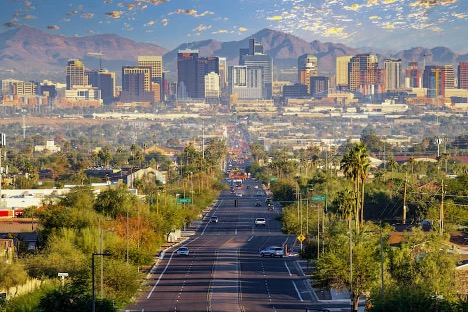
• Metro population: 4,948,203
• Percent of renewable energy: 12%
• Square feet of green space per person: 970.9
• Percent of energy-efficient commuters: 11.3%
According to research conducted by Climate Central, the country’s fifth-largest city is one of the fastest-warming cities in the U.S. Given its desert location and the fact that the city receives just 7.5 inches of rain each year, water scarcity is a growing concern for Phoenix. However, aggressive sustainability efforts driven by the local government have helped land the city on our list. Phoenix ranks in the top 5% of the country for amount of green space per capita and is currently working to increase tree coverage 25% by 2030.
